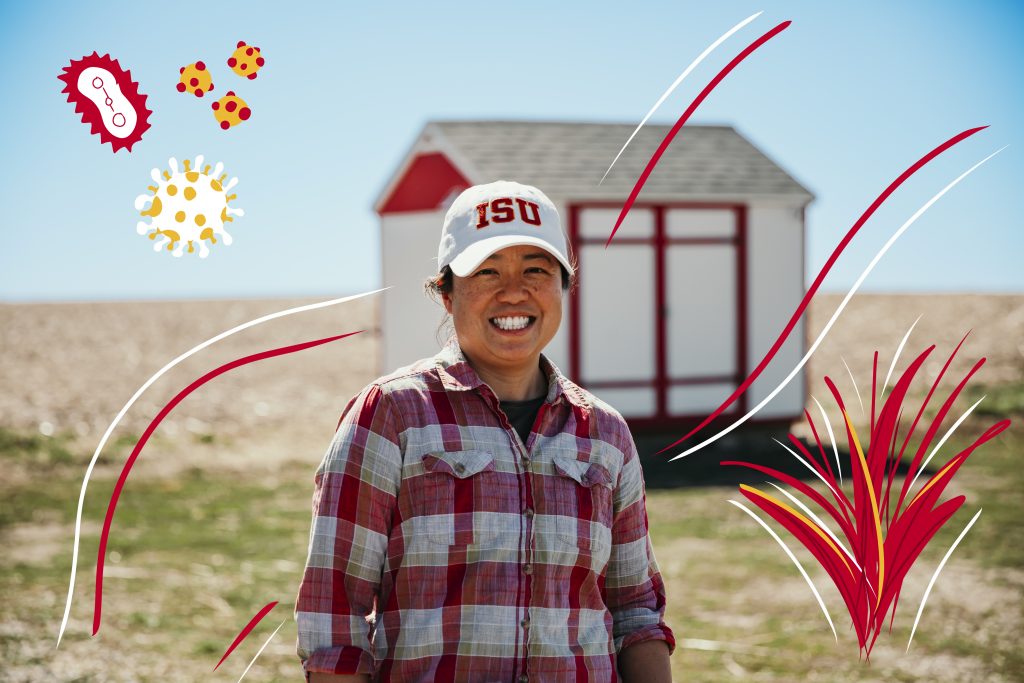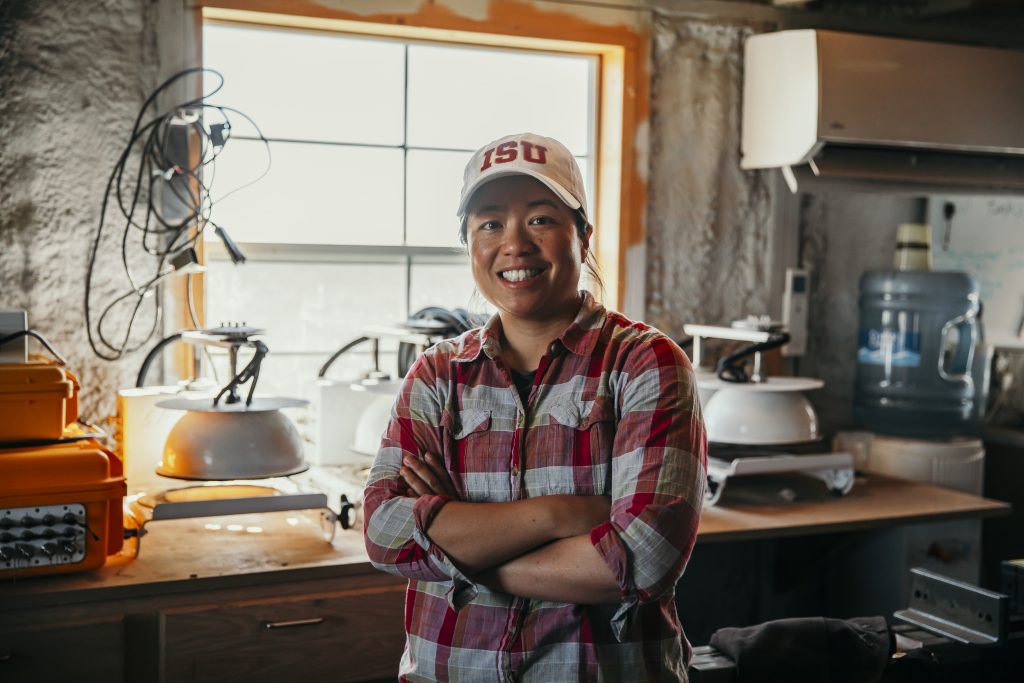Micro scale, macro impact: Adina Howe studies interaction between microbes and crops to reduce carbon footprint
Author: Sarah Hays
Author: Sarah Hays

Just because it is at a micro scale, doesn’t mean it can’t have a macro impact. And that’s exactly why associate professor Adina Howe’s research dives into the world of microbes.
To the naked eye, it’s unknown what microbes are around you. But microbes, living organisms that are so small that you can’t see them, are always around – and a necessity for our lives and a healthy ecosystem.
Microbes are everywhere – and Howe, along with professor Andy Vanloocke and associate professor Marshall McDaniel at ISU, are working with the Department of Energy Center for Advanced Bioenergy and Bioproducts Innovation to find the connection between microbes and how they can help us sustainably grow our bioenergy crops.
The overall project will develop fuels and products by integrating three highly interconnected Department of Energy priority areas: growing the right crops, turning plants into fuel and determining the environmental and economic bottom line. Iowa State is one of 16 partner institutions participating in the project.
Howe is specifically researching the microbes on Miscanthus – a perennial bioenergy crop known for its high yields of biomass and potential to sequester carbon. Global climate change and environmental stresses, such as floods and drought, threaten crop security and productivity. But one of the factors that helps support the growth of crops is its microbiome. Howe researches the microbes living on the leaves of the plant, or the phyllosphere. The phyllospheres of plants represent the largest environmental surface area of microbial habitation on the planet.
“When you just look at the plant, you are missing a big part of the system that is releasing carbon and nitrogen – the microbes are a big part of it,” Howe said.
Howe and her collaborators identify the microbes that live in the harsh environment of the leaf, why they may be living there, and the benefits they might provide to the plant. Microbes can help plants respond to drought, salinity, and extreme temperatures and are also critical for cycling carbon and nitrogen in the soils and to the plants.
“We were studying miscanthus and switchgrass and found predictable microbes on the leaves of switchgrass and miscanthus perennials,” Howe said. “So what we are trying to figure out is, what are they doing? And are they alive?”
One paper that Howe recently completed within the project showed that these microbes are alive and actively growing, and what genes they were producing. The output of the paper suggested that these microbes could be interacting with the leaf of the plant for signaling and handling stress such as water drought, nitrogen deficiency and greenhouse gas emissions.

Going forward, bioenergy crops will hopefully be grown in lands that we are not currently able to grow food crops, where they would need to be resilient. Could these microbes play a part in making that happen? Results suggest that they can.
Combined with the larger CABBI team, the opportunities from this project are exponential – and above all, Howe wants to make sure they use this research to better the environment from all corners of agriculture.
“We have a chance here to make good decisions about agricultural management and think about how it is going to impact water quality and soil erosion. We need to think about how to optimally plant in different environments where it grows best,” Howe said.
The impact of microbes goes beyond the micro scale – and Howe is ready to enhance our environment using the interaction between microbes and agriculture.